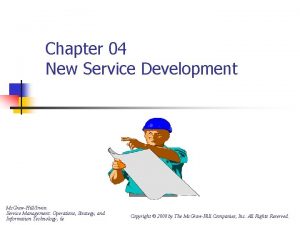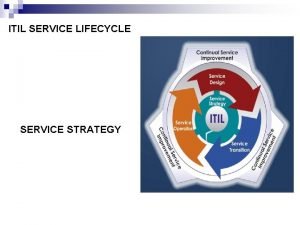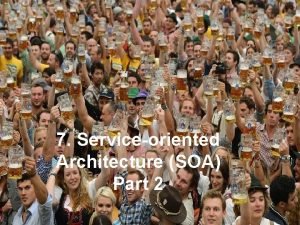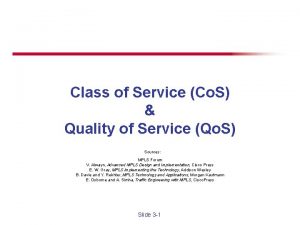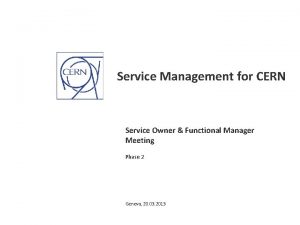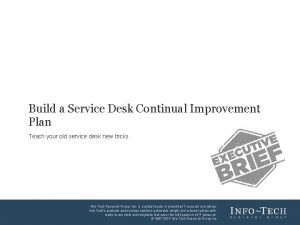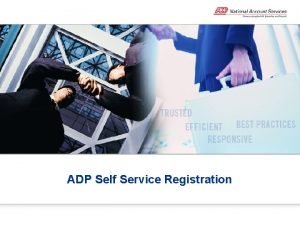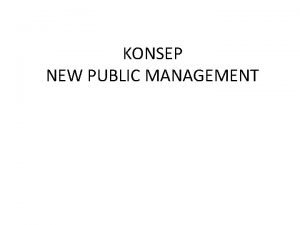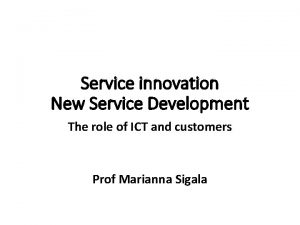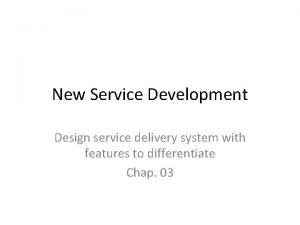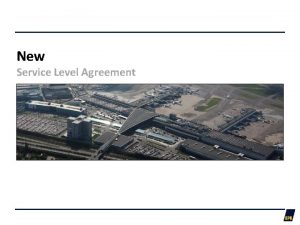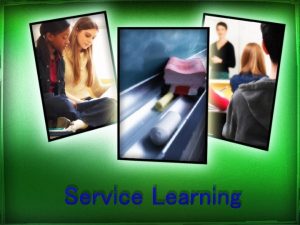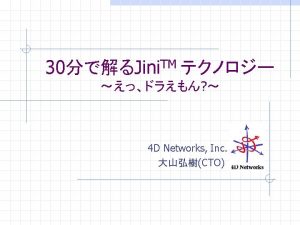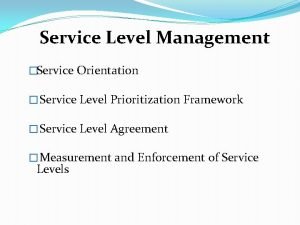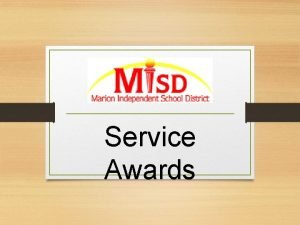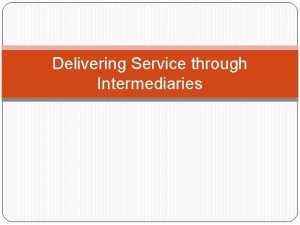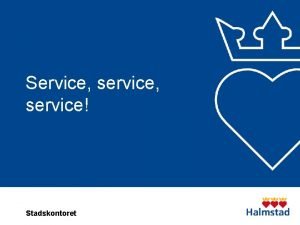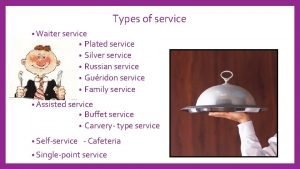New Service Development Chapter 5 New Service Development
















- Slides: 16

New Service Development Chapter 5

New Service Development Cycle Execution Stage Full Launch Planning Stage People Design Products Technology Develop -ment Chapter 5 - New Service Development Systems Analysis 1

Service Innovation • Radical Service Innovation – Requires a different process and design approach than incremental innovation – Innovative service firms require enablers to facilitate the process – Nature of change will dictate where resources are allocated – Radical innovations imply increased risk and resource investment Chapter 5 - New Service Development 2

Service System Design • Service Decision Factors – Facility Location (based upon proximity to customers) – Facility Layout (depends on the presence of the customer at the location) – Product and Process Design (Covers both the intangible and tangible aspects of the service offering) – Scheduling (how the workers are assigned to the service) – Quality Control, Measures and Time Standards (focus is on the needs of the customer) Chapter 5 - New Service Development 3

Service System Design • Service Decision Factors – Demand/Capacity Planning (depends on the type of service and the immediacy of matching supply to demand) – Customer Contact Level (physical presence and length of time that a customer spends with a service provider) – Industrialization (the substitution of technology for people) – Front Line Personnel Discretion (denotes the flexibility of the service employee while interacting with a customer) Chapter 5 - New Service Development 4

Service System Design • Service Decision Factors – Worker Skills (depend on service strategy and concept, customer contact level and industrialization level) – Sales Opportunities (coincide with high customer contact and employee discretion) – Standardization of Service Offering (level of uniformity provided in the service) – Customer Participation (substitution of consumer labor for provider labor) Chapter 5 - New Service Development 5

Service System Design and Innovation • Supporting facilities must be in place prior to offering a service • Facilitating goods such as a product or other tangible features are part of the service • Sensual and psychological benefits are associated with the service offering • Services might be bundled into one supporting facility • Must differentiate between core and ancillary services Chapter 5 - New Service Development 6

Service System Design and Innovation Industrialization Level Low Face to Face Delivery Current Service Telephone or Courier Delivery High Technology Based Self-Service Incremental Service Innovation Technology-Driven Service Radical Service Innovation Low High Standardization of Service Offering Chapter 5 - New Service Development 7

Service System Design Tools • Service Blueprinting – Design tool based on the process flow diagram • Delineate front office from back office operations • Determine standard or maximum execution times, materials and the exact process for each step • Identify potential failure points and generate mitigation plans to prevent or recover from a failure Chapter 5 - New Service Development 8

Service System Design Tools Service Blueprint for Espresso and Coffee Shop Seen by customer Take Drink Order Collect Payment Make Drink Deliver Drink Fail Poi nt Materials (Coffee, flavors, milk, cups, etc. ) Line of Visibility Prepare Mixes Order Supplies Not seen by customer Chapter 5 - New Service Development 9

Service System Design Tools • Customer Utility Models – Success depends upon customer’s perceived utility or benefit provided by the service’s price or non-price attributes – Promise of customer utility measurement is the ability to optimize the design of a service – Satisfaction with the quality of service affects customer loyalty and repurchase intent Chapter 5 - New Service Development 10

Service System Design Tools • Customer Utility Models – Service quality can be measured along five principle dimensions • Reliability, responsiveness, assurance, empathy and the tangible aspect of the service – Improving reliability can result in increased labor and training costs – Responsiveness may be enhanced by reducing queue times – Empathy and assurance can be influenced by the ability of service providers to convey knowledge, courtesy and impressions of caring – Enhancing the tangible attributes of a service increases costs of consumables Chapter 5 - New Service Development 11

Service System Design Tools • Customer Utility Models – Conjoint analysis (CJA) and discrete choice analysis (DCA) are used to model customer behavior • Discrete choice experiments involve careful design of service profile choice sets • Design of a new airport restaurant requires the following – – – Identification of important attributes Specification of attribute levels Experimental design Presentation of alternatives of respondents Estimation of choice model Chapter 5 - New Service Development 12

New Service Design for Snowbird Ski Resort Determine Appropriate Service Attributes (e. g. , Price, Service Time, Intangible, & Tangibles) Determine all variables and costs related to Service Attributes & demand -capacity matching strategies Collect Customer Attribute Information using choice-based or ratings-based conjoint analysis Solve for Customer Segments and Utility Weights (bs) using multinomial Logit or regression analysis Profile N with attributes, price, and cost Customer waiting time Feasibility Evaluate Market Share & Profit Chapter 5 - New Service Development & Profit 13

New Service Design for Snowbird Ski Resort Chapter 5 - New Service Development 14

Summary • Challenges to service design – Intangible nature of service encounters – Inability to prototype and test new concepts – Propensity to use ad-hoc methods • Innovations come through incremental and radical new services – The two approaches address the same factors (i. e. customer contact and industrialization) Chapter 5 - New Service Development 15
 New service development in service marketing
New service development in service marketing Chapter 16 toward a new heaven and a new earth
Chapter 16 toward a new heaven and a new earth Itil service lifecycle service transition
Itil service lifecycle service transition Itil service lifecycle management
Itil service lifecycle management Continual service improvement 7 steps
Continual service improvement 7 steps Enduring service intensifiers examples
Enduring service intensifiers examples Soa architecture
Soa architecture Mpls class of service
Mpls class of service Service owner vs service manager
Service owner vs service manager Help desk improvement plan
Help desk improvement plan Self service adp
Self service adp The new public service
The new public service New public management
New public management Wne self-service
Wne self-service New perspectives on marketing in the service economy
New perspectives on marketing in the service economy Nac burial fund 2021
Nac burial fund 2021 Speech
Speech
